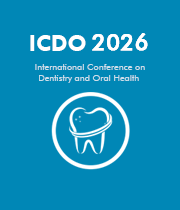Jaw Surgery
Jaw Surgery, or Orthognathic Surgery, is a major surgical procedure within the field of dental science. It is conducted when the upper and lower jaws do not meet correctly and/or there is an improper bite. It can also help with breathing and speaking issues, and can even improve the aesthetics of the face. The procedure itself is an extensive one that can be conducted in a single operation or in multiple steps. Typically done under general anesthesia, the surgeon makes an incision in the gum line and repositions the jaw bones to adjust them to the desired position. They then stabilize the bone in place with some type of internal fixation, such as screws or plates. Jaw Surgery can help people suffering from skeletal and dental deformities. Some of the common conditions addressed through this procedure are an abnormal bite, misalignment, receding chins or lower lips, and uneven jaws. It is also used to repair facial fractures, usually involving the jaw. Other than that, it can correct jaw related tempro-mandibular joint (TMJ) disorders and sleep apnea. Jaw Surgery is usually not recommended until the patient has reached full physical and psychological maturity. When deciding if a person is suited for the procedure, the dentist looks at several factors including age, severity of the misalignment and the goals of the patient. Additionally, x-rays and plaster models are taken to get an accurate view of the teeth and jaws. Jaw Surgery is considered a major procedure with a significant recovery period. After the surgery, swelling, soreness, and bruising is normal. Painkillers may be needed to help with the discomfort. Eating will also be difficult and a liquid diet will likely be recommended for a few weeks. Maintaining oral hygiene is especially crucial since it helps promote faster healing and reduces the risk of infection. In the long run, Jaw Surgery can correct troublesome jaw issues and provide life changing results. A successful procedure can help give a patient a newfound confidence and even promote better oral health. However, it is important that patients understand the risks and the recovery involved before deciding to pursue it. Consult your dentist to find out if you are a good candidate for Orthognathic Surgery.

David Geoffrey Gillam
Queen Mary University of London, United Kingdom
Christopher Turner
Spacemark Dental, United Kingdom




Title : Evaluating hygienist follow up for head and neck oncology patients in secondary care: Results from a two cycle audit
Peter Basta, Newcastle Dental Hospital, United Kingdom
Title : Atypical facial pain unravelled
Christopher Turner, Spacemark Dental, United Kingdom
Title : New treatment of temporomandibular disorder through muscle balance and muscle regeneration by activation of quiescent muscle stem cells( satellite cells) with mitochondrial dynamics
Ki Ji Lee, National Reserach Foundation & Busan Medical University, Korea, Republic of
Title : Cutaneous, Cranial, skeletal and dental defects in patients with Goltz syndrome
Ali Al Kaissi, National Ilizarov Medical Research Center for Traumatology and Orthopaedics, Russian Federation
Title : The nature and management of dental erosion in patients with bulimia nervosa
Maya Fahy, The Royal Victoria, School of Dentistry, United Kingdom
Title : A systematic review on the early detection of oral cancer using artificial intelligence and electronic tongue technology
Maryam, Kardan Dental Clinic, Iran (Islamic Republic of)